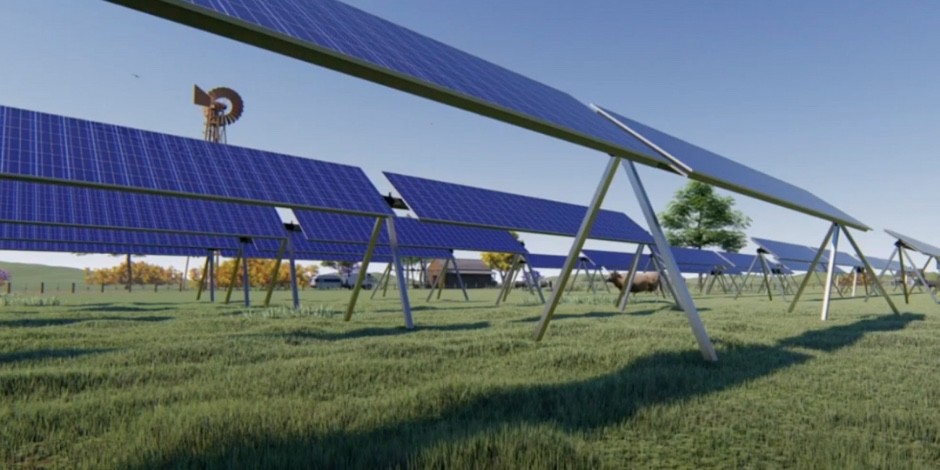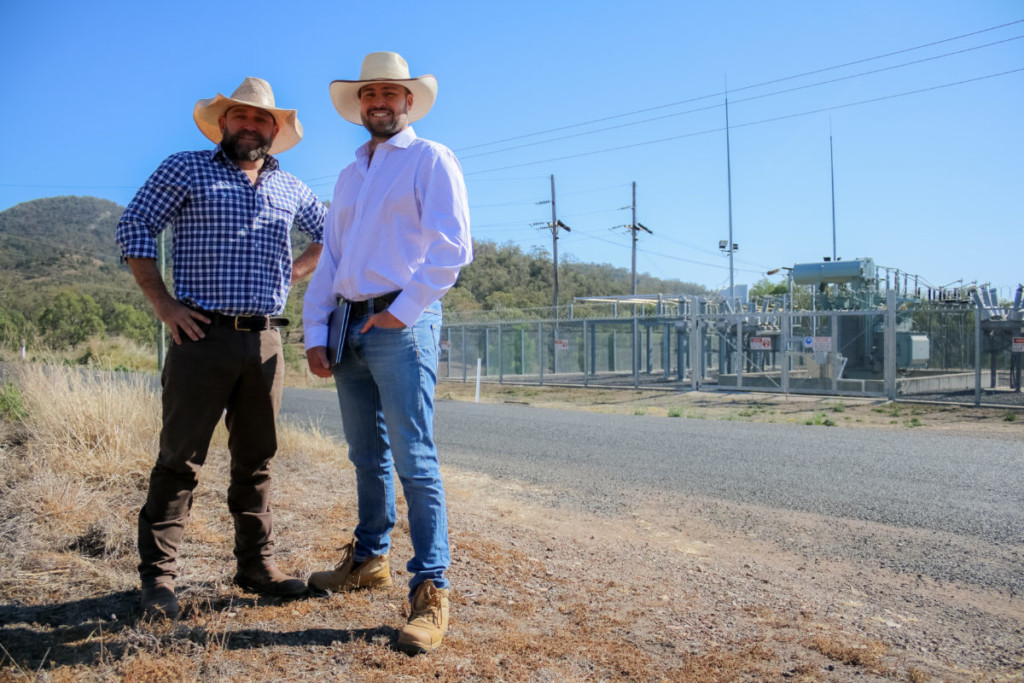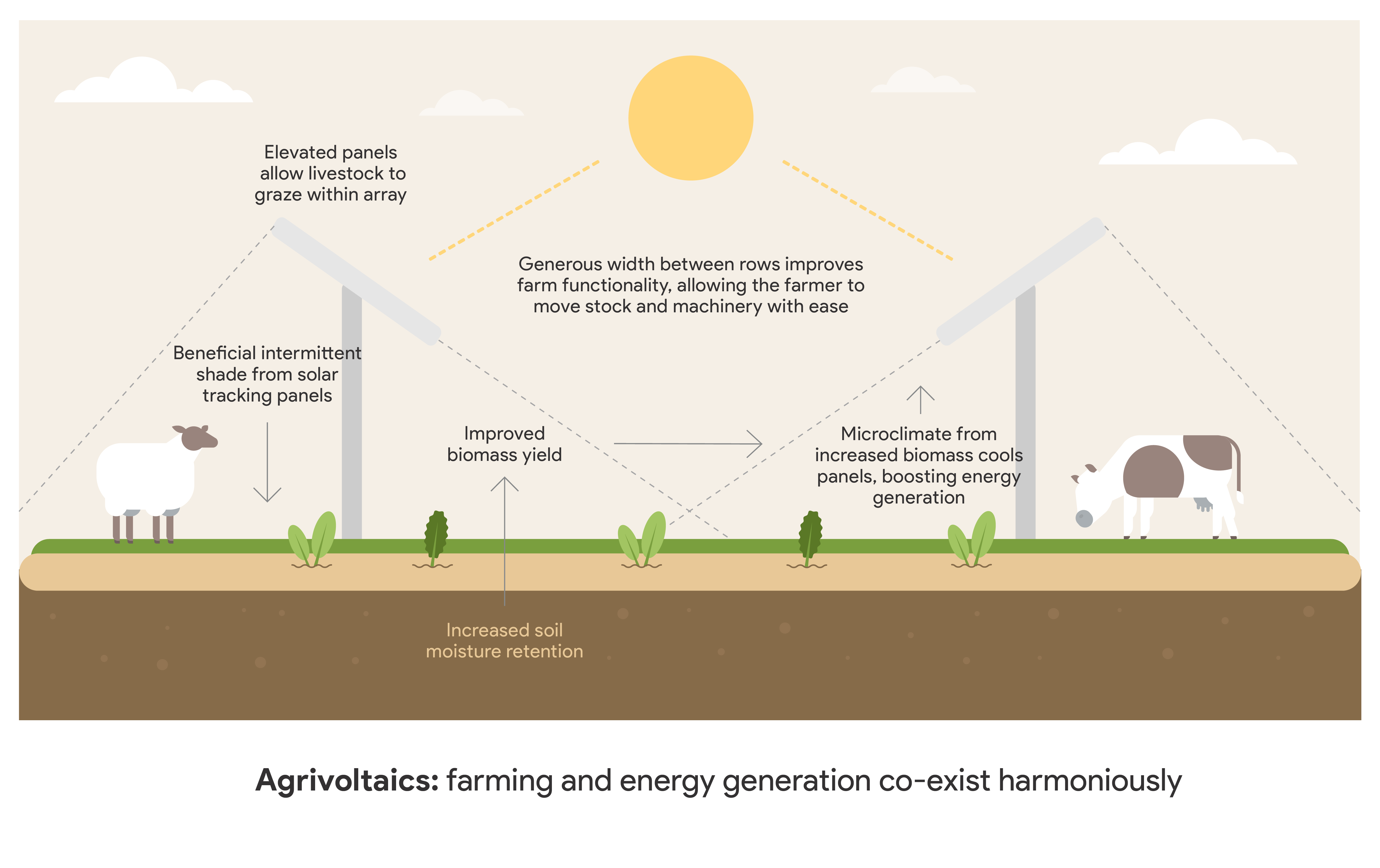Stock-proof solar design set to optimise agricultural productivity
Ben Wynn, Founder of Tamworth-based solar energy company, Wynergy wants to end the land use conflict between solar farms and agriculture – with a best practice system that benefits both, known as agrivoltaics, with biomass yield increases up to 92%.

Ben Wynn, Founder of Tamworth-based solar energy company, Wynergy wants to end the land use conflict between solar farms and agriculture – with a best practice system that benefits both, known as agrivoltaics, with biomass yield increases up to 92%.
As the world transitions towards renewable energy, sunburnt countries like Australia are ideally suited to incorporating solar into their energy mix. The steep drop in costs (from $135/MWh in 2015 to $44.50-$61.50 per MWh in 2020) has made large-scale solar an attractive option for new generation and projects are springing up across regional Australia.
In 2019, 27 new large-scale projects were commissioned, almost doubling the industry’s total capacity. A further 53 projects are under construction or financially committed.
To reduce development costs, most “solar farms” are built next to existing transmission lines, close to towns and regional cities and frequently, often on prime agricultural land.
With NSW, Queensland and Victorian governments prioritising renewable energy development in their post-COVID-19 economic recoveries, the solar transformation looks set to continue. And with it, concern that solar farms will displace traditional agricultural land use.
A truly mixed farm: plants, livestock and solar
What if there was a way for the two industries to co-exist? Ben Wynn, Founder and Chief Operating Officer of Wynergy, has dedicated the last six years of his life to finding out.
Motivated by his family’s own land use conflicts in northern NSW, Ben founded Wynergy. “I wanted to enhance the way solar farms interact with agriculture and the environment,” said Ben.
The solution is ‘agrivoltaics’, a practice now globally adopted, which combines clean energy and agricultural production in a way that maximises the yield of both.
The premise is simple: a “stock-proof” solar tracking system that is higher off the ground (2.2 metres beam height compared to 1.2-1.5m in traditional systems), spaced further apart (around 10-12m between rows instead of 5-6m) and designed with the landowner to maximise farm functionality.
“Traditional solar farms, with their low, tightly-packed solar arrays, effectively lock the farmer out of being able to productively use it,” explained Ben.
Agrivoltaics enable ongoing productive use of the land, he said. Depending on the farmer’s needs, arrays might allow for sheep yards, gates, troughs or irrigation points.
“The idea is the farmer can get their Polaris under them, or sow between the rows on a tractor.”
But the benefits of agrivoltaics extend beyond just farm functionality. Through a combination of increased light penetration and beneficial shading, agrivoltaic systems actively improve soil health, boost plant growth and increase energy generation yields.
Studies from Oregon and Arizona in the US show that land under agrivoltaic arrays retained 328% more soil moisture and produced 92% more biomass than control paddocks. Graziers can maintain higher carrying capacity heading into summer and land productivity could be increased up to 200%. There are animal welfare benefits to grazing under solar panels too, with the panels providing shelter from sun and wind.
RELATED: Soil carbon markets: the risks, rewards, costs and complications
Wynergy is partnering with NSW DPI and Farrer Memorial Agricultural High School to ground-truth these results in Australian conditions, and Ben is optimistic. Where once he hoped to show an agrivoltaic system would achieve on-par or slightly reduced plant yield, the US results have, “been music to our landholders’ ears”.
It’s music to energy producers’ ears too. The microclimate created by the biomass below results in lower air temperatures around the installations, meaning cooler panels and more energy generation.
Farmers as partners in solar energy generation
Like in traditional solar farm agreements, Wynergy landowners are compensated for the land under the array (typically a 20-year lease with the option for five plus five-year extensions). But Wynergy want more than energy generation: they want a real partnership with landowners.
“In essence the solar becomes a part of their farm and a part of their farm management strategy.”
Farmers also receive the option to receive shares or upfront compensation of the solar farm entity and retain responsibility for managing the vegetation within the array.
RELATED: SA farmers help reduce plastic waste with organic rye straws
“They’re non-manned, but we feel the partnership, between the farmer and Wynergy, is going to ensure that we’ve got multiple sets of eyes that are responsible for the asset all the time.”
The farmer will be actively engaged in reviewing the plans, Ben added and making sure what’s proposed will work with their plan.

Wynergy’s Managing Director Brad Dolahenty, and Chief of Operations and Founder, Ben Wynn.
“Having communities in rural and regional areas feel good about solar farms coming to their area, because of the economic boost and ongoing agricultural yields that are going to be established needs to be communicated loud and clear – because it makes sense.”
Wynergy wants Australian investors to fast-track new projects
Wynergy’s agrivoltaic system doesn’t incur any extra construction costs and uses a proven, reliable supplier. So the value proposition is strong: take market-ready technology and use existing transmission infrastructure to generate more energy for the same cost as traditional arrays, but without the land use conflicts that can drag out approvals processes and undermine community and government support.
Werris Creek, 45km south-west of Tamworth in NSW, is the first of Wynergy’s solar farms to enter development. Funded by a group of local investors, the 5MW project will co-exist with farming on eight hectares of the Menz family’s operation.
Tamworth’s Farrer Memorial Agricultural College will be one of the first to pilot the technology, with construction starting in April 2021, that’s set to save the school $70,000 to $80,000 a year in diesel and machinery maintenance costs by installing Wynergy’s agrivolatic system on its commercial farm.
Wynergy has several other projects ready and waiting for investors to come on board to kickstart approvals and development. They’ll focus capital-raising efforts on “local mum and dad investors” and other sophisticated Australian investors.
RELATED: Impact investing for the future of food
“It’s a way for locals to get involved and take ownership of these projects,” Ben said, while also redistributing profits back to the local community.
Through Wynergy’s retail arm, local communities will also benefit from the opportunity to purchase energy direct from its solar farms at what Ben hopes will be really competitive market rates.
By 2030, Wynergy wants to have 1000MW of agrivoltaic solar generation in regional Australia. Ben may have pioneered agrivoltaics in Australia, but he hopes other energy companies will jump onboard too.
“It’s a no brainer, given you can use a piece of infrastructure that costs no more and actually enhances your energy density with farm functionality.
* Find more information about Wynergy, including cornerstone investment opportunities HERE.
Enjoyed this story? Want to learn more about the Asia Pacific region’s innovative agrifood tech ecosystem? Sign up for our newsletter here and receive fresh stories about global leaders, farmers, startups and innovators driving collaborative change.

